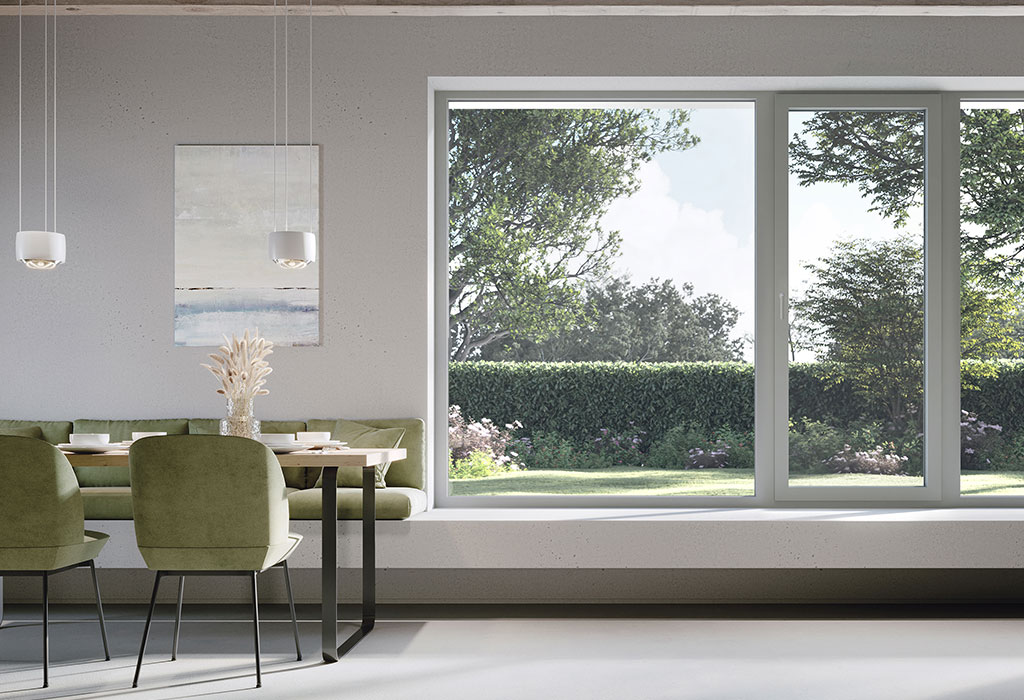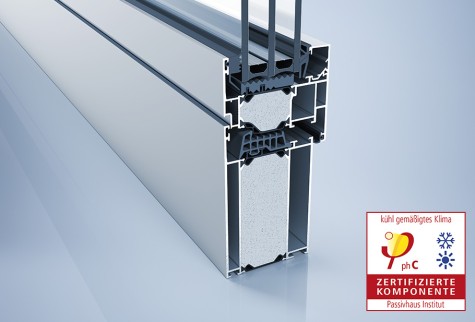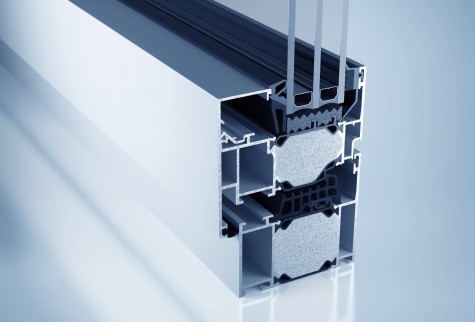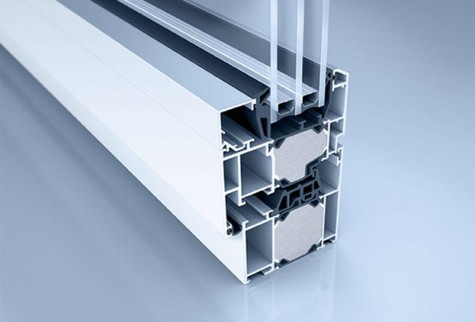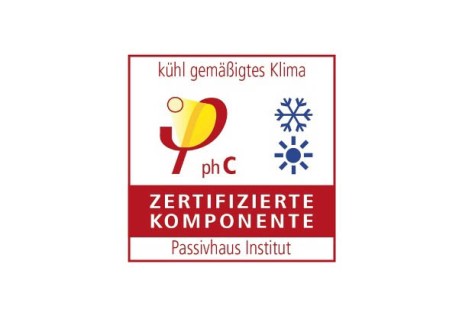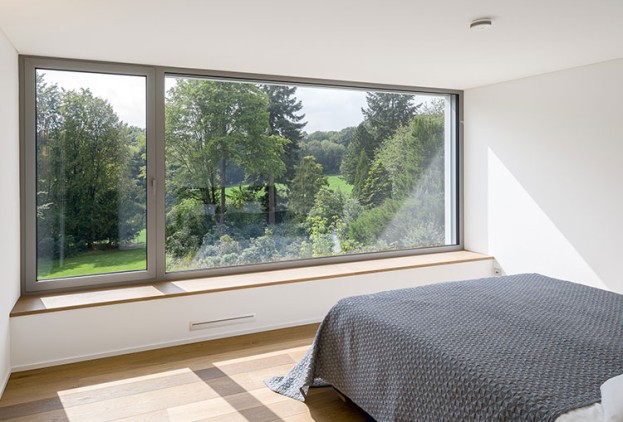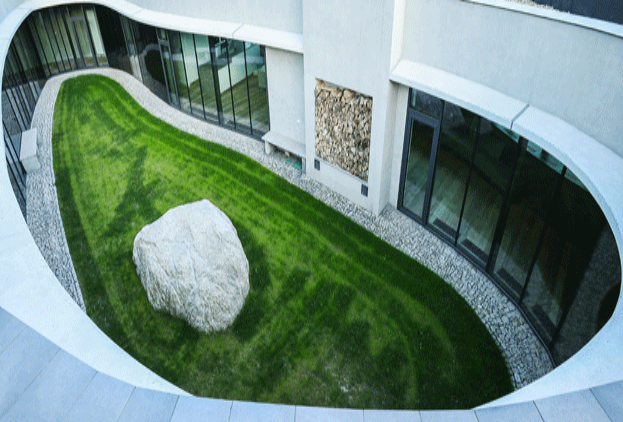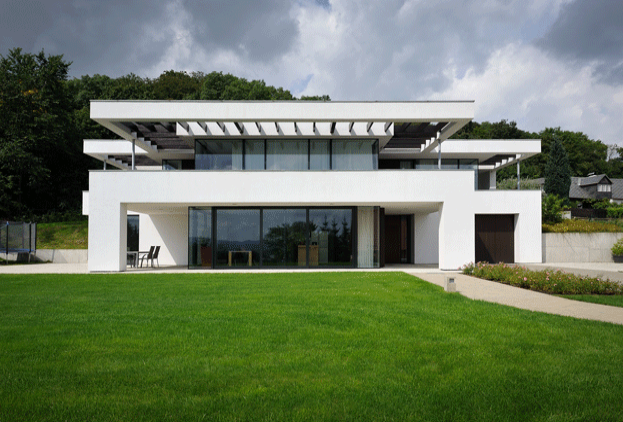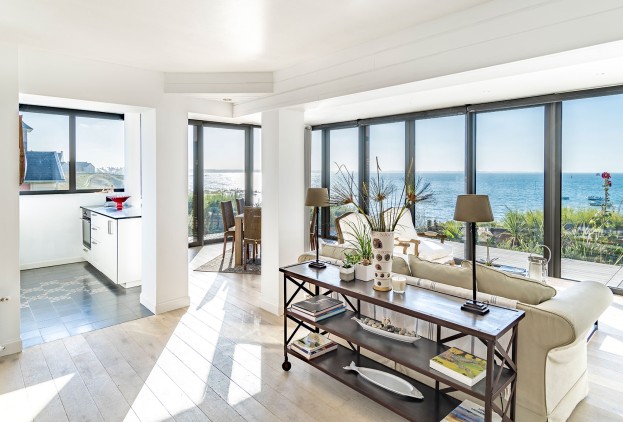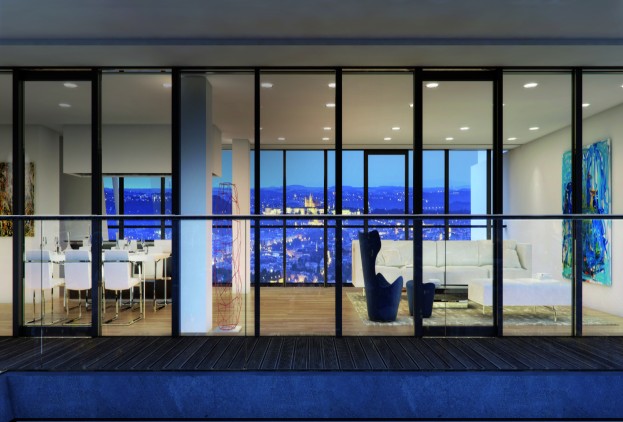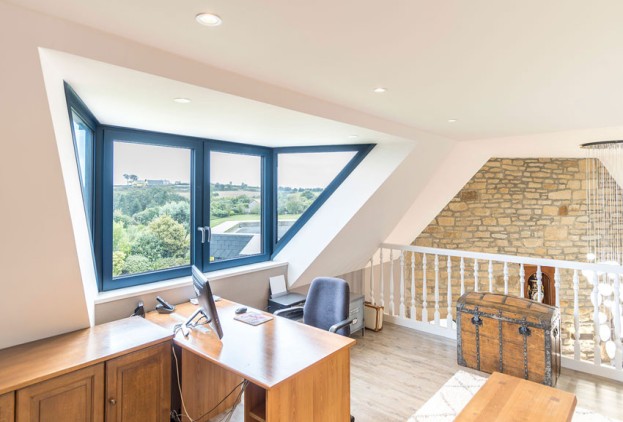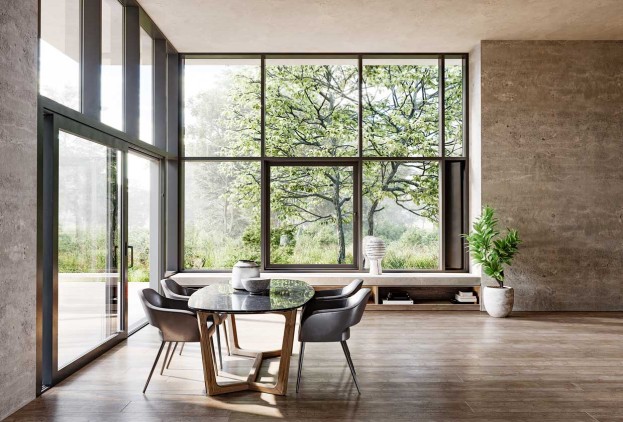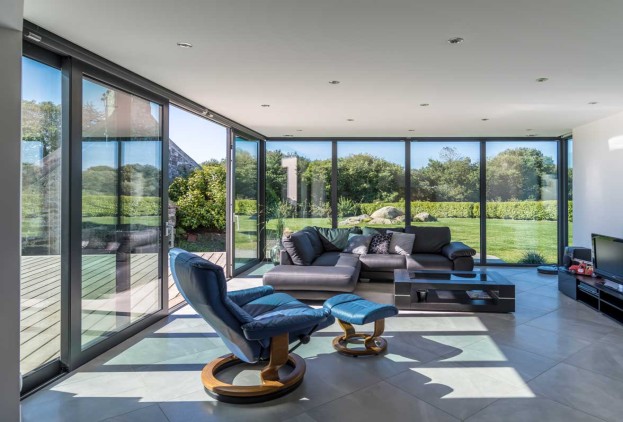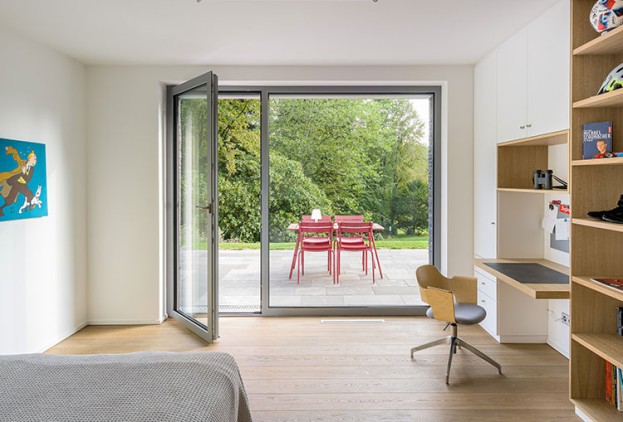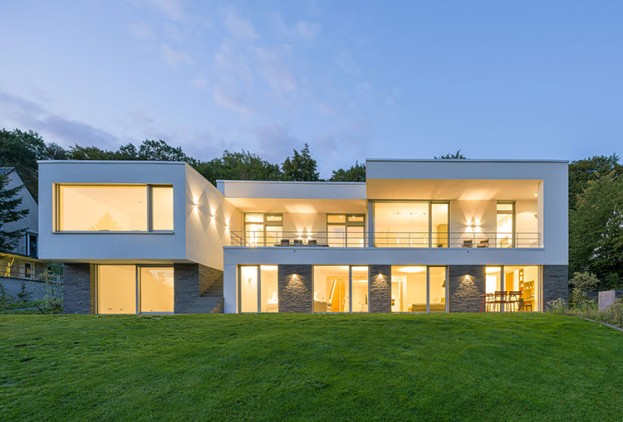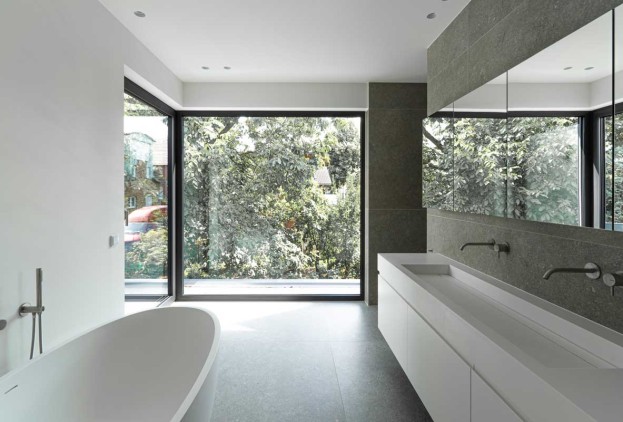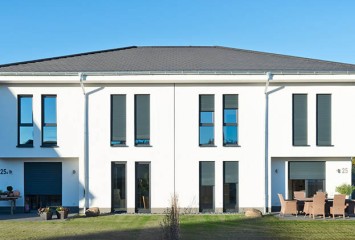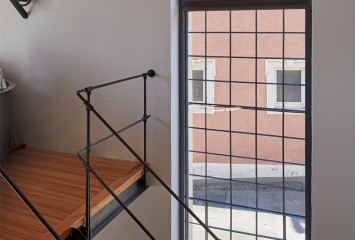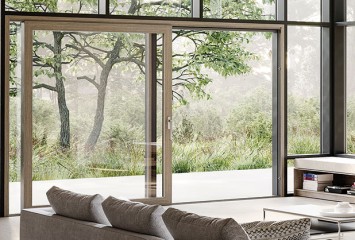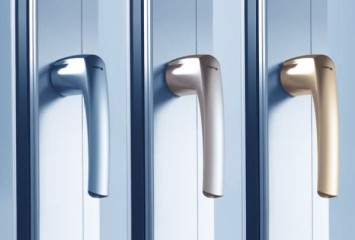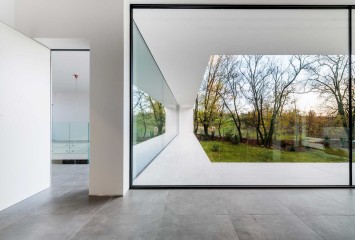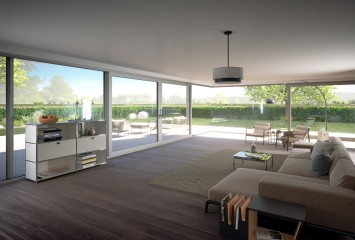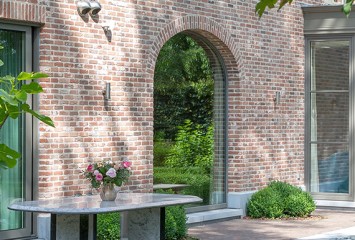Insufficiently insulated windows often result in costly energy loss. Aluminium windows by heroal minimise this energy loss with thermally separated profiles, special fitting technology and an optimal profile geometry. Replacing old windows is not only an investment in more comfort, it also pays for itself in the long run through savings on energy costs. The modular structure makes it possible to individualise the planning of your windows with insulation classes ranging from highly insulated to passive-house certified. A passive house has no active heating system and is heated only by passive energy sources. This allows for a reduction of up to 75% in heating energy. Passive house windows are an important component in achieving the passive house standard, as windows are one of the main sources of lost heat.
Certified passive house windows as energy savers
What’s so special about heroal passive house windows?
Components of heroal passive house windows
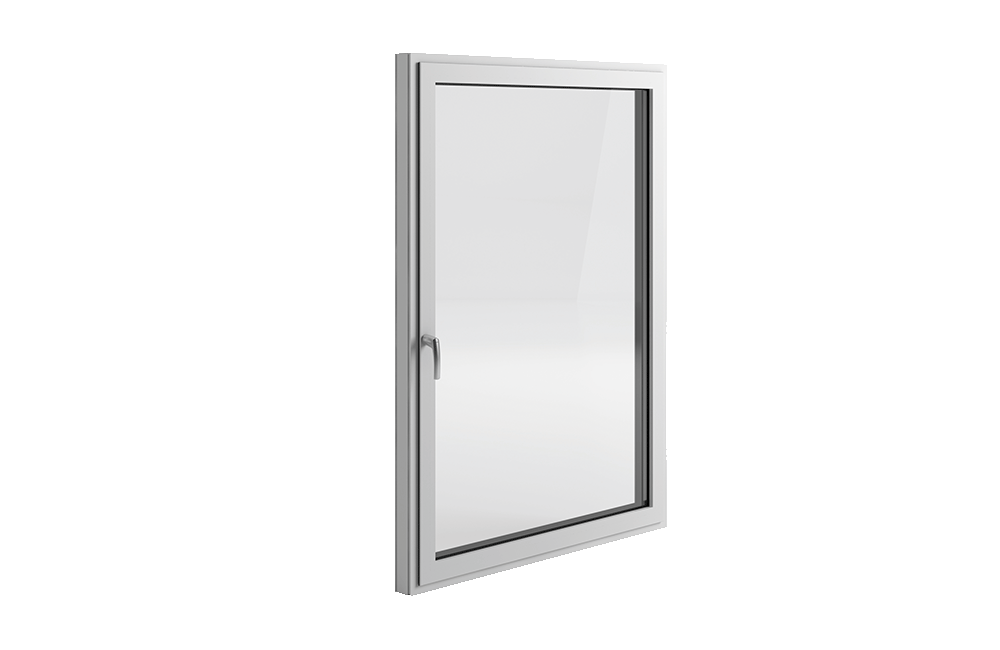
heroal's own profile composite
heroal's own profile composite - heroal is the only company producing thermally insulated aluminium-PVC-composite profiles under external monitoring (ift Rosenheim, testing institute).
Modular composition of sealing zones
Modular composition of sealing zones - Thanks to the modular composition of sealing zones, individual customer requirements become possible - from high thermal insulation to passive house suitability.
Optimised isothermal curves
Optimised isothermal curves - Due to optimised isothermal curves, the thermal conductivity via the edges of the sealed glass pane is considerably reduced.
Low-E glass
Low-E glass - To make sure that valuable thermal energy is not lost via the glass pane, our specialised partners will be pleased to give advice on the suitable insulating glass for your requirements. Depending on the required thermal insulation, coated Low-E glazing or triple glazing may be used.
heroal foam-filling process
heroal foam-filling process - In their modular insulation areas, heroal aluminium composite profiles are filled with PU-foams. The special process developed by heroal ensures that the insulation chambers are 100 % foam-filled, which leads to a better thermal insulation than other processes.
Patented insulating strip technology
Patented insulating strip technology - heroal's innovative insulating strip technology combines high capacity with minimal loss of heat. The geometry of the insulating strips reduces the energy flow and thus also reduces heat conductivity significantly, exceeding the current requirements of EnEV, the German energy saving regulation, by far.
heroal passive house windows at a glance
Passive house certification by the Dr. Feist Passive House Institute
Gallery
Advantages of heroal passive house windows
Find the right heroal specialist
Click here to search for a specialist partner
Search >Further reading for your interest
Your advantages with heroal
- over 3,500 specialist partners worldwide
- products with tested quality
- family-run company with a long tradition
- made in Germany
- personalised design
- comprehensive range of services
- superior technical solutions

